#saint matthew
Explore tagged Tumblr posts
Text
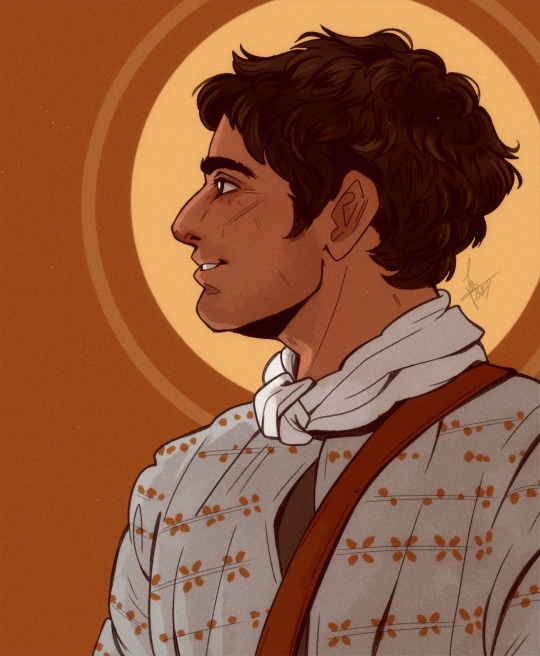

Saint Matthew
Another Matthew fanart from The Chosen! aka the one in my pfp that I really loved. He’s my favourite character in the show and I really liked how they portrayed him, giving him unique traits.
#art#digital art#the chosen matthew#the chosen tv series#the chosen tv show#the chosen#the chosen fanart#saint matthew#Bible#christianity
264 notes
·
View notes
Text
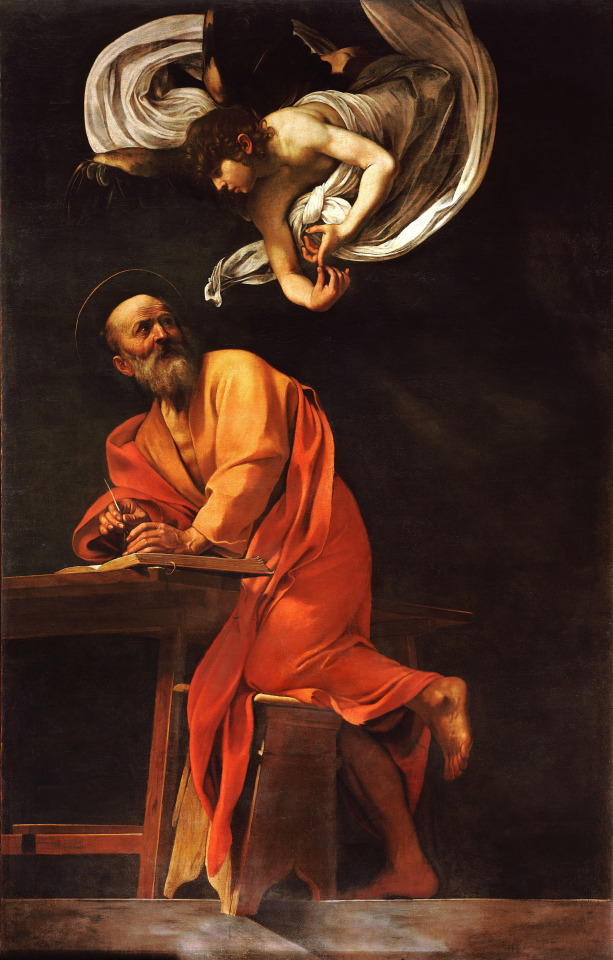
Caravaggio (Italian, 1571-1610) Inspiration of St. Matthew, ca.1599-1600 Contarelli Chapel, San Luigi dei Francesi, Rome
#art#fine art#european art#classical art#europe#european#oil painting#fine arts#mediterranean#europa#caravaggio#italian#italian art#saint matthew#1500s#angel#christian art#christian#catholic#catholic art#1600s#heaven
562 notes
·
View notes
Text

St. Matthew the Evangelist (from The Four Evangelists), Frans Hals, ca. 1625
#art#art history#Frans Hals#religious art#Christian art#Christianity#Saint Matthew#imaginary portrait#Dutch Golden Age#Baroque#Baroque art#Dutch Baroque#Dutch art#17th century art#oil on canvas#Odesa Museum of Western and Eastern Art
176 notes
·
View notes
Text

Saint Matthew - Unknown artistmaker
10 notes
·
View notes
Text
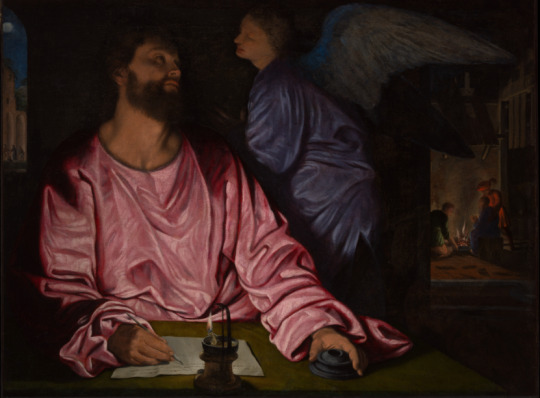
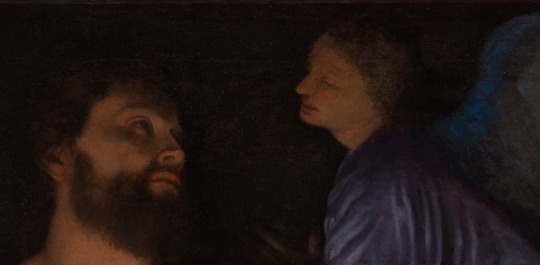
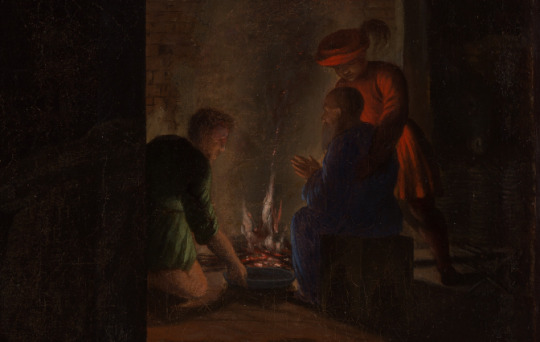
Saint Matthew and the angel, Giovanni Girolamo Savoldo, 1530-35
#art history#art#italian art#aesthethic#painting#16th century#savoldo#giovanni girolamo savoldo#met museum#saint matthew#angel#angelcore
42 notes
·
View notes
Text

Today, 21st of September, is the feast day of Saint Matthew the Apostle. When he was in Ethiopia, he debunked two wizards. Salty about this, they summoned two fire-breathing dragons. When Matthew heard of the dragons, he visited the wizards and their dragons became tame and went asleep at his feet. Then he dared the wizards to wake the dragons again, which they couldn't. So he woke them himself and sent them to the wilderness, where they wouldn't harm a person ever again.
8 notes
·
View notes
Photo
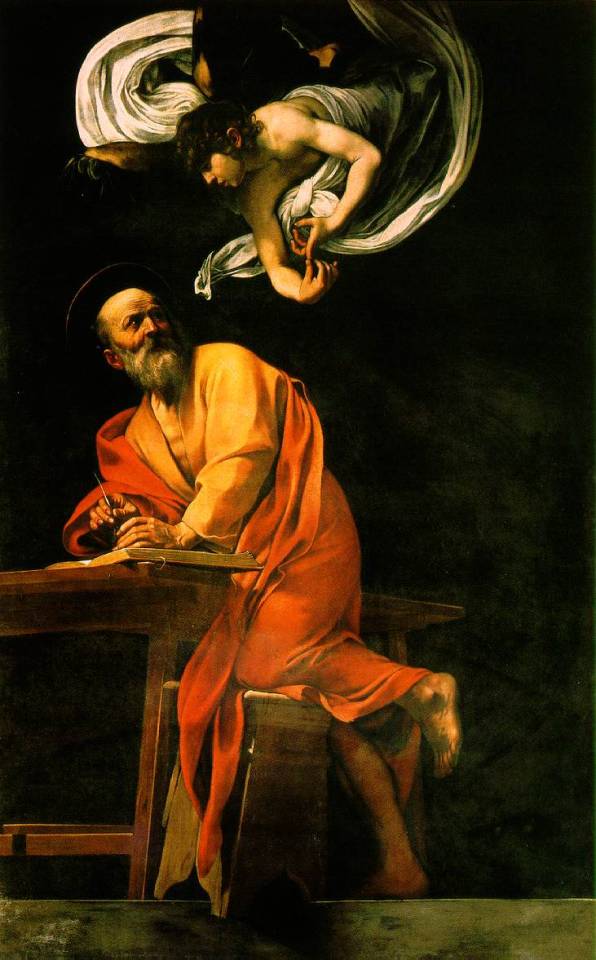
The Inspiration of Saint Matthew - caravaggio
62 notes
·
View notes
Text
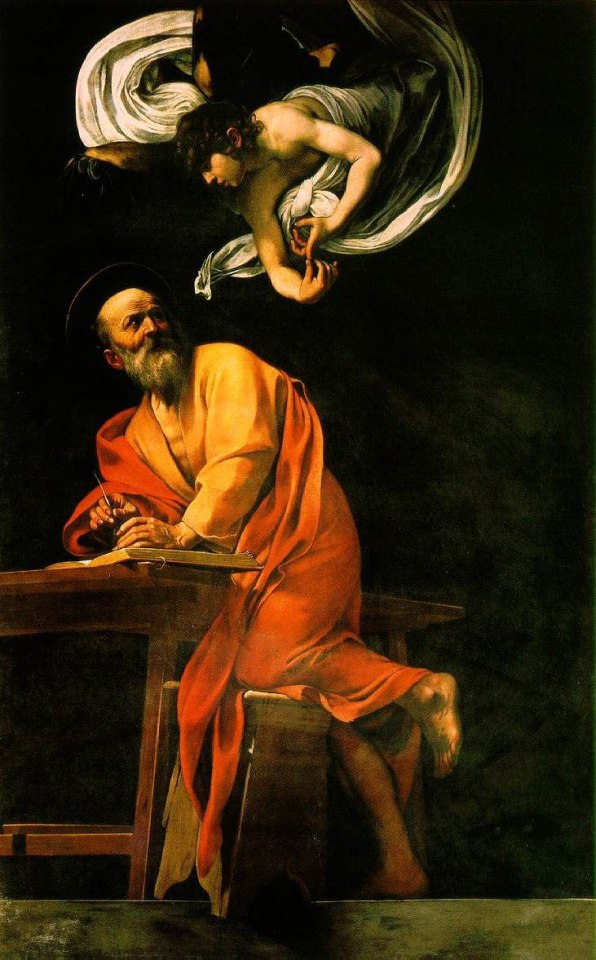
The Inspiration of Saint Matthew, by Caravaggio
52 notes
·
View notes
Text

Group two: the ones learning the Torah! Mary, Ramah and Matthew love reciting the Torah together!
#the chosen#Matthew the tax collector#Matthew the apostle#saint matthew#Mary Magdalene#ramah the chosen#my fanart#my drawing#chi is
24 notes
·
View notes
Text

Saint Matthew by Matthew (Me)
2015
2 notes
·
View notes
Text

I’m never not thinking about Saint Matthew the Apostle btw. He’s my confirmation Saint and as a convert from another debatably Christian religion his story in the Gospels really hits hard. I chose him/he chose me before The Chosen show was a thing (that’s a fun sentence) but I love how the show emphasizes what I’ve gotten out of his story for so long now but haven’t heard people talk about before.
As a tax collector, Matthew was ostracized from his religion and people. Whether it was for aspiration or out of desperation, there was seemingly no going back after that choice. To everyone around him, he was Godless. And then he had the gall to just get up and leave behind everything he had worked for, everything that had lost him his God and community, to follow some blasphemous Rabbi???
To learn to pray again, in a new way. To do hard things and complain and question along the way but to follow God despite it all. I mean, what a hypocrite in like at least three different ways, right? Dude, now not even the Roman state even kind of likes you. And yet he jumped up and followed Jesus when he was called. Sunk cost fallacy who? Basing your identity and relationship with God around the approval of others instead of Jesus who??
Anyways I just think that’s crazy and beautiful and he’s just like me fr guys. Every Saint was a sinner (except Mother Mary lol) and every sinner can be a Saint!!
- “The Calling of Saint Matthew” by Caravaggio
5 notes
·
View notes
Text
SAINT OF THE DAY (September 21)
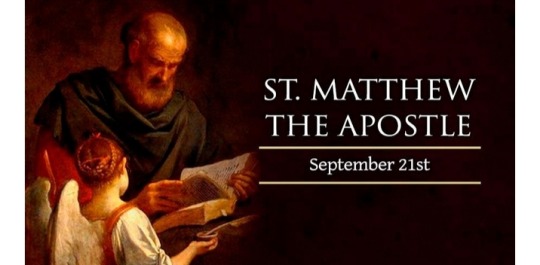
Saint Matthew, the first-century tax collector turned apostle who chronicled the life and ministry of Christ in his Gospel, is celebrated by the Church today, September 21.
Although relatively little is known about the life of St. Matthew, the account he wrote of Christ's ministry — traditionally considered to be the first of the four Gospels — is of inestimable value to the Church, particularly in its verification of Jesus as the Messiah.
Eastern Catholics and the Orthodox churches celebrate St. Matthew on November 16, along with St. Fulvianus, a prince who is recorded in some traditions as converting from paganism after Matthew's martyrdom.
The Gospel accounts of Mark and Luke, like Matthew's own, describe the encounter between Jesus and Matthew under the surprising circumstances of Matthew's tax-collecting duties.
Jewish publicans, who collected taxes on behalf of the Roman rulers of first-century Judea, were objects of scorn and even hatred among their own communities, since they worked on behalf of the occupying power and often earned their living by collecting more than the state's due.
Jesus most likely first encountered Matthew near the house of Peter, in Capernaum near the Sea of Galilee.
The meeting of the two was dramatic, as Matthew's third-person account in his Gospel captured:
“As Jesus passed on,” the ninth chapter recounts, “he saw a man named Matthew sitting at the customs post. He said to him, 'Follow me'. And he got up and followed him.”
Matthew's calling into Jesus' inner circle was a dramatic gesture of the Messiah's universal message and mission, causing some religious authorities of the Jewish community to wonder:
“Why does your teacher eat with tax collectors and sinners?”
Jesus' significant response indicated a central purpose of his ministry: “I did not come to call the righteous but sinners."
A witness to Christ's resurrection after death, as well as his ascension into heaven and the events of Pentecost, Matthew also recorded Jesus' instruction for the apostles to “go, therefore, and make disciples of all nations, baptizing them in the name of the Father, and of the Son, and of the holy Spirit, teaching them to observe all that I have commanded you.”
Like 11 of the 12 apostles, St. Matthew is traditionally thought to have died as a martyr while preaching the Gospel.
The Roman Martyrology describes his death as occurring in a territory near present-day Egypt.
Both the saint himself and his Gospel narrative have inspired important works of religious art, ranging from the ornate illuminated pages of the Book of Kells in the ninth century, to the Saint Matthew Passion of J.S. Bach.
Three famous paintings of Caravaggio, depicting St. Matthew's calling, inspiration and martyrdom, hang within the Contarelli Chapel in Rome's Church of St. Louis of the French.
Reflecting on St. Matthew's calling, from the pursuit of dishonest financial gain to the heights of holiness and divine inspiration, Pope Benedict said in 2006:
“In the figure of Matthew, the Gospels present to us a true and proper paradox: those who seem to be the farthest from holiness can even become a model of the acceptance of God's mercy and offer a glimpse of its marvelous effects in their own lives.”
6 notes
·
View notes
Text
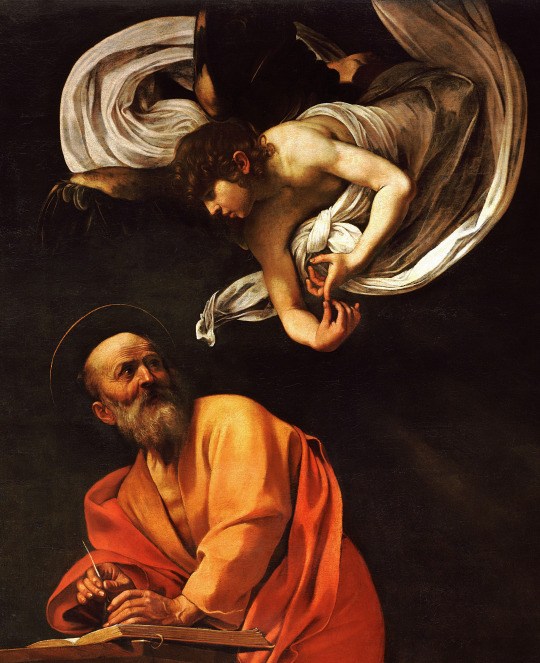
Caravaggio (Italian, 1571-1610) Inspiration of St. Matthew, ca.1599-1600 Contarelli Chapel, San Luigi dei Francesi, Rome
#caravaggio#art#fine art#european art#classical art#mediterranean#europa#fine arts#european#europe#oil painting#inspiration of st matthew#1500s#1600s#angel#st matthew#saint matthew#saint#bible#christian art#christian#christianity#catholic#rome#italy#italian#italian art#southern europe
93 notes
·
View notes
Text
on Matthew and Mary Magdalene
at first, I was no exactly thrilled with the ship tease considering the fact that these are real people who existed but after rewatching both seasons 2 and 3 (especially S2 E6 & 7 and S3 E1 & 7), these two have grown on me ngl and their interactions are heartwarming.
idk what direction Dallas is planning to take with these two: whether it would be reciprocated or one-sided and I have no issue either way. I just love their interaction.
13 notes
·
View notes
Text
Saint Matthew is not just a tax collector; he is also a symbol of the many sinful things that occupy our time and separate us from God and neighbor. Christ's simple words echo through him to all of us: 'Follow Me.' It is an invitation to come to Christ, but also to the banquet as though we are in Matthew's home. There we can feast with our fellow sinners, now made righteous through the Blood of Christ, who bids us each to come to His table. What joy!
Behold a Great Light: A Daily Devotional for the Nativity Fast Through Theophany
2 notes
·
View notes
Text
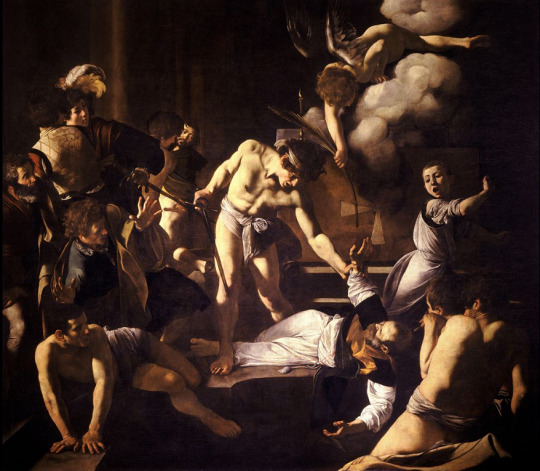
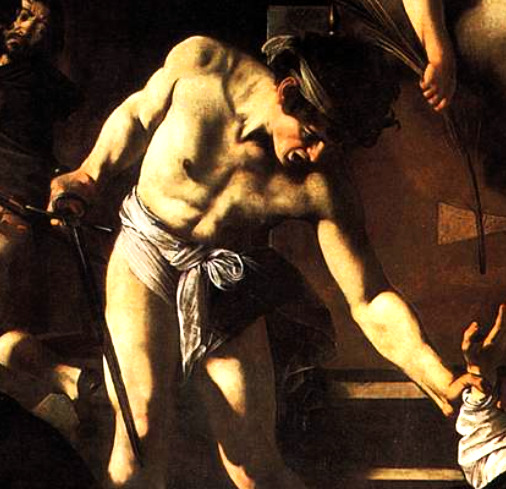
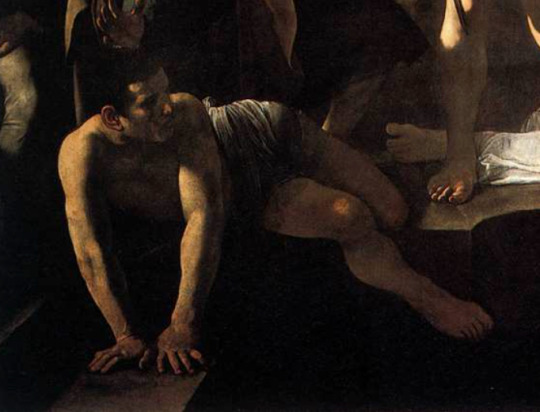
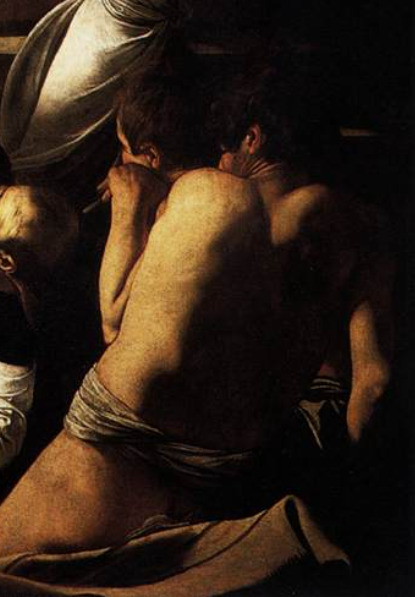
The Martydrom of Saint Matthew, Caravaggio (Michelangelo Merisi), 1599-1600
#art history#art#painting#italian art#17th century#baroque art#aesthethic#caravaggio#michelangelo merisi da caravaggio#saint matthew#the martydrom of saint matthew#dark academia#rome#san luigi dei francesi
21 notes
·
View notes